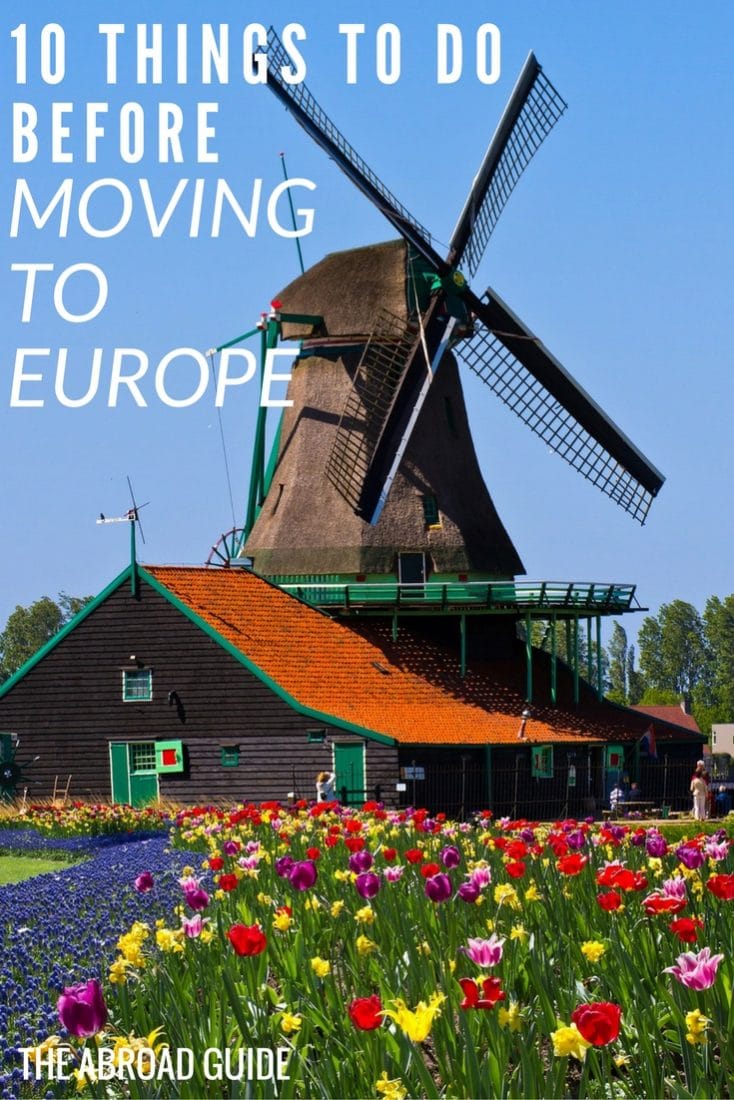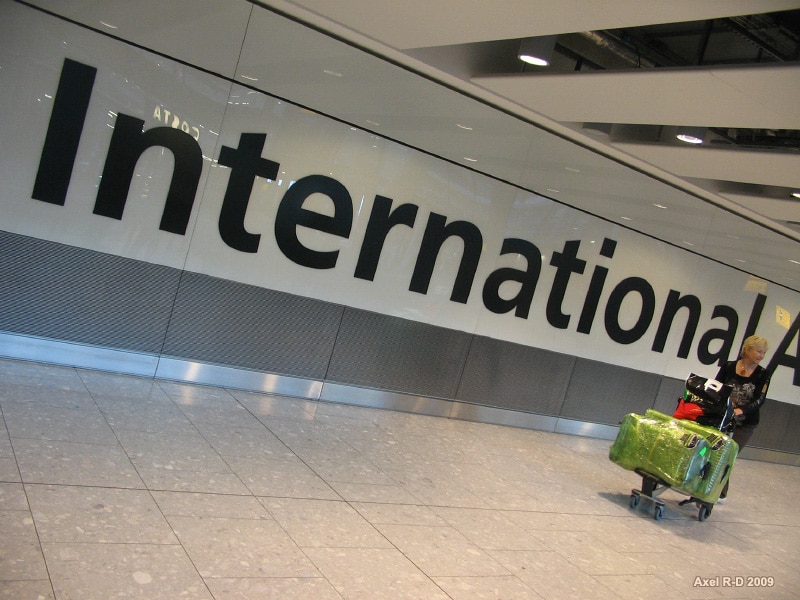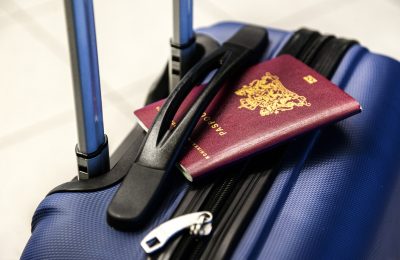Whether studying abroad for a few weeks or planning to move to Europe long term, there’s some preparation that needs to be done before doing so that’s more than just packing up your entire life into a suitcase. I’ve put together a list of things you must do before you move to Europe— some of which you may not have thought about before your big move. This is the list I wish I had before I moved to Italy for a year…
1. Learn the language
Even if you’re moving to a city where English is spoken often, chances are that that’s not the case once you get away from the tourist-packed areas, which, as someone who’s about to become a local, you’ll most likely want to avoid. Learning the local language, even if you start with the basics, can take you really far and help you feel a little less lost in your new home.
Instead of buying a language book that you’ll most likely learn nothing from, download a free language app like DuoLingo to get you started with the basics. When you’re ready for more, you can get cheap one-to-one lessons over Skype from iTalki— I’ve used this site to help brush up on my Italian before some more recents visits to Italy. Use this link and you’ll get a $10 credit to use towards your first lesson so you can see if it’s for you (I’ll get a credit too, at no extra cost to you.)

2. Get to know where you’ll live
Do some research on the area you’ll be living in before you go. If you know where you’ll be staying, get to know the neighborhood through blogs, guides and even Google Street View. It will not only help you feel less lost once you get there, you’ll get more and more excited about your big move to Europe. If you’re not sure where you’re staying just yet, start to research some neighborhoods that you might want to look for accommodation in.
Some resources to check out before you move abroad:
• Time Out (they have dedicated websites for major cities around the world)
• Lonely Planet
• The Abroad Guide Destinations section
• Local bloggers’ sites

3. Start inquiring about places to live
If you won’t have accommodation already set up for you by your employer or school before you arrive in Europe, don’t panic. If you’re a student, there are some great (secure) sites that will help you book accommodation before you arrive to Europe, but if you’re not or don’t have that option for the city you’ll be living in, book yourself into a hostel or AirBnb for a week or two after you arrive so that you can give yourself time to visit some potential accommodation options. If you look at private rental properties on sites like GumTree or CraigsList, you can send some emails with questions before you go abroad, but never give any personal information or money before you see the apartment in person and sign any documentation.
4. Print some photos of your friends and family
Bringing some reminders of home can help you turn your new, unfamiliar accommodation into your humble little abode . Before you move abroad, print out some of your favorite photos of your friends and family so you can hang them in your new room. Use a service like Shutterfly printing to get great prints on the cheap.
5. Get travel insurance
Every government handles their national healthcare system differently, so before moving to Europe, do some research so that you can choose the best travel insurance plan for your situation and location. Travel insurance can also cover lost luggage, stolen items or passports, and other disasters that you may encounter while moving to or living in Europe, so getting a good plan is worth the money. Try STA Travel for some affordable options.
6. Pick up a new camera
You’re moving to a completely new and foreign destination— you’ll definitely want to be able to document every step of your journey along the way. The newest cameras have built-in wifi, making it really easy to share your photos directly to Facebook or Instagram on your phone. Check out this list of cameras that are great for both study abroad students and world travelers.
7. Figure out your communication plan
The internet makes communicating really easy these days, but when you don’t have a functioning phone in a foreign country, it gets a little tougher. Decide how you’ll let your family know that you’ve made it safely, and also think about what you’ll want to do in terms of getting a phone once you make the move to Europe. It’s fairly easy and cheap to pick up a pay-as-you-go SIM card that can fit in your smartphone (if it’s unlocked) or you can pick up a basic phone for practically nothing.
8. Get a no-fee credit card
Depending on your bank, ATM withdrawals and debit card charges can really start to add up when international charges come into play. Call up your bank and ask for a breakdown of what the charges will look like on your current account and cards, and ask if there’s a way to reduce those charges since you’ll be away for longer than a couple of weeks. If you’re not given any options, then look into switching to Capital One or just opening up a credit card with them, as their debit and credit cards are known for not having international fees. I love having the credit card when I travel because it means I don’t have to carry large amounts of cash with me but still won’t get slammed with fees.
9. Get familiar with the local transportation options
This will help you get around your new home easier and with less hassle, and lots of foreign transportation systems have processes that you may not be familiar with. For example, when traveling on a bus or train in Italy, you need to validate your ticket by getting it stamped with the date and time, otherwise you could face a hefty fine. Doing some research on the local transport options will also help you choose where to live once you arrive to Europe.
10. Document everything you own
Just in case you are ever robbed or lose something important, like your passport, it’s a good idea to have photos and copies of anything that is somewhat important to you. This includes debit and credit cards, passport, expensive electronics (take note of serial numbers too), etc. Also keep a record of who you need to contact if you lose any of those things, and how to contact them. Having all of this saved somewhere safe will make it easier to report everything to the police, insurance company, or anyone else who is helping you sort it all out.


















































Great post! I always dreamt of moving abroad to study when I turn 18 and since now there are only some months left, I should start taking care of this things. Thanks for the tips! I will take them into account if I get to move to Europe.
You’re welcome Nita! Good luck with the move.